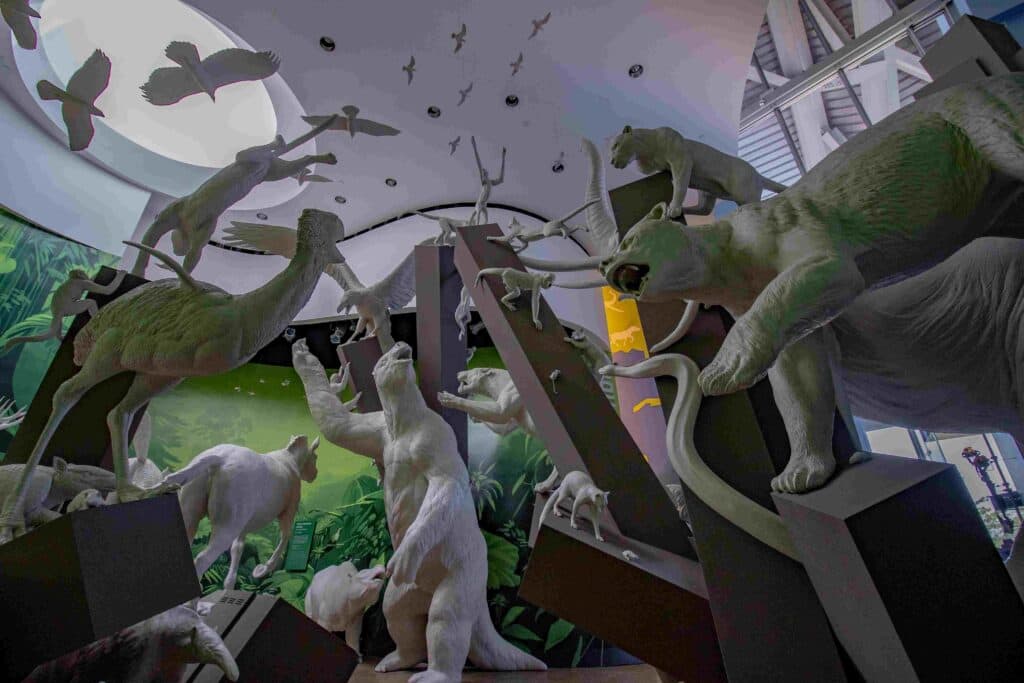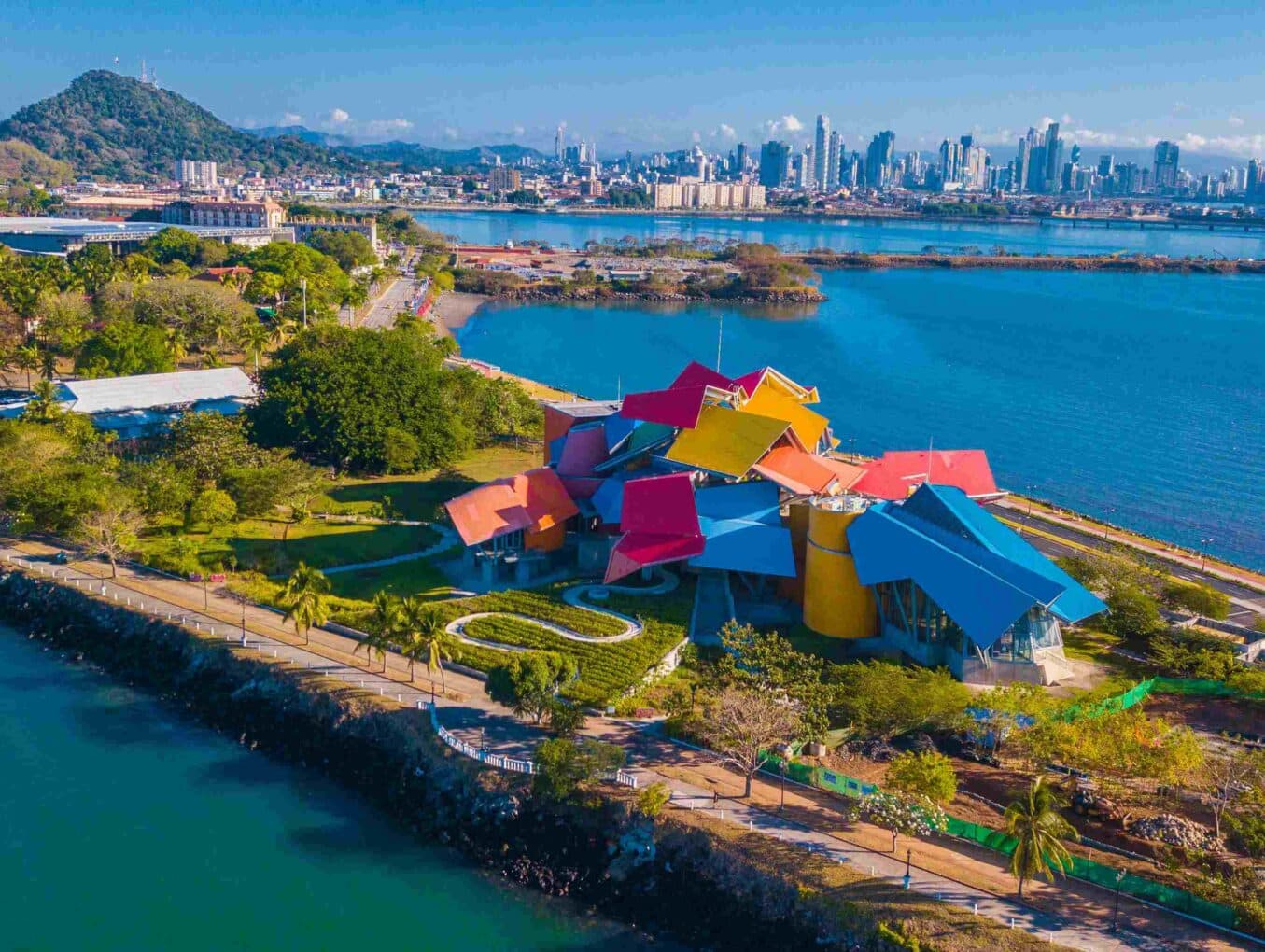The Isthmus of Panama was formed relatively recently in geological time and that the emergence of this piece of land changed the world completely. The formation of the isthmus created a barrier between the Pacific and Atlantic oceans, causing the two regions to evolve ecologically in markedly different directions. Among the results of this emergence were climatic changes around the world, where rainforests became savannas, forcing many arboreal primates to live on the ground, a vast exchange of plants and animals back and forth between North and South America; and the formation of an access route that allowed the first humans to migrate through the frozen Bering Strait down into South America. This is the great story that the Biomusuem tells.
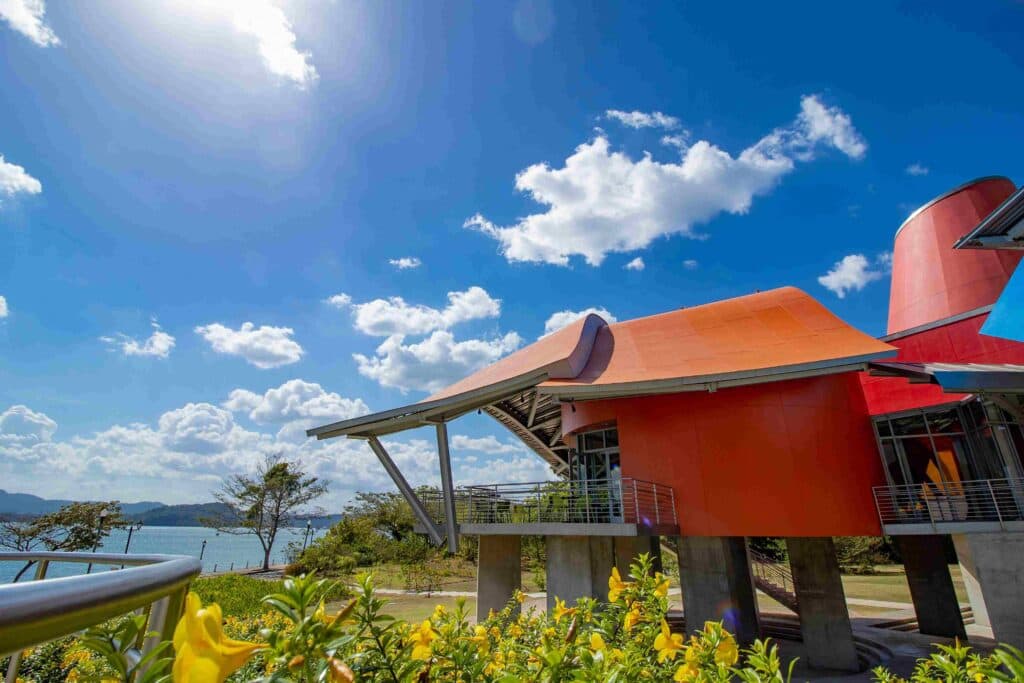
A Unique Architectural Complex
This museum that tells the great story of the emergence of the isthmus is the first architectural structure in Latin America designed by the renowned architect Frank Ghery, creator of famous works such as the Guggenheim Museum in Bilbao, the Disney Concert Hall and the Experience Music Project.
The complex that includes the building, the exhibits and the park offers a new civic and educational resource of great importance to Panama and an inspiring cultural destination for visitors from around the world, revealing the decisive role of the Isthmus of Panama for three million years of change and biological evolution.
Design Reflecting History and Nature
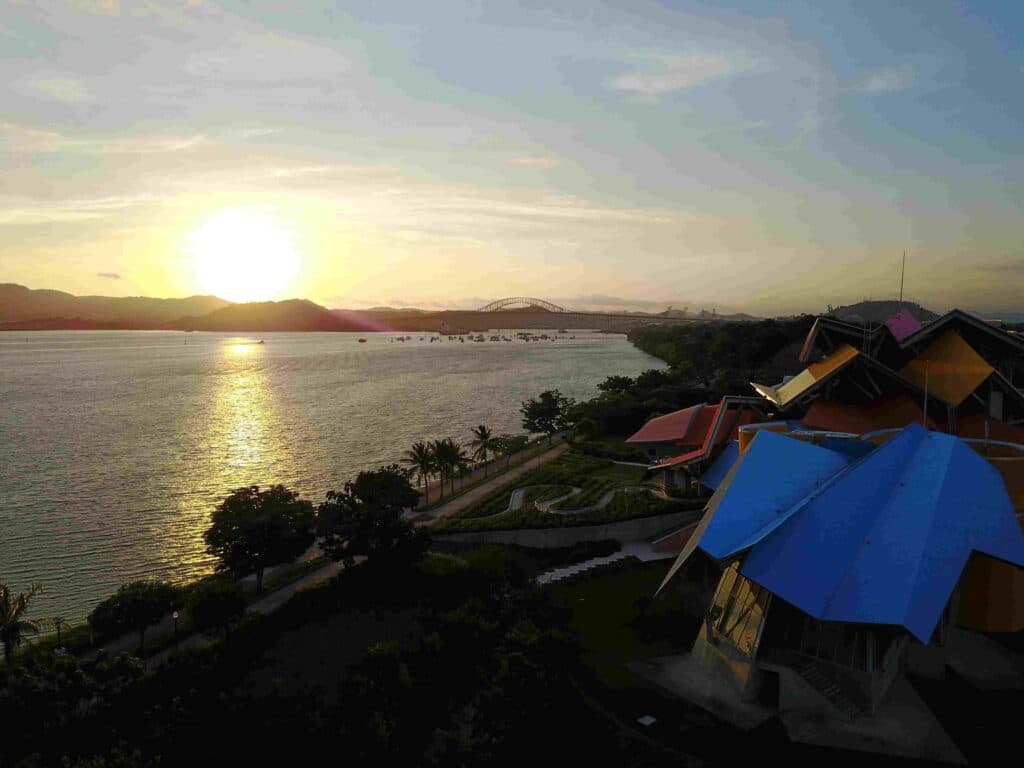
The heart of Frank Gehry’s design is an open-air public atrium, covered by a dynamic set of metal canopies of various shapes and vivid colors: blue, red, yellow, green. In addition to contributing to making the Biomuseum an attractive destination for visitors, the canopies refer to the canal’s architecture of zinc roofs and colorful buildings, evoking the spectacular neo tropical habitat of Panama and offer protection against frequent wind-driven rains. At one story above ground level, the atrium offers expansive views of the Canal and Panama City.
Eight Exhibition Rooms
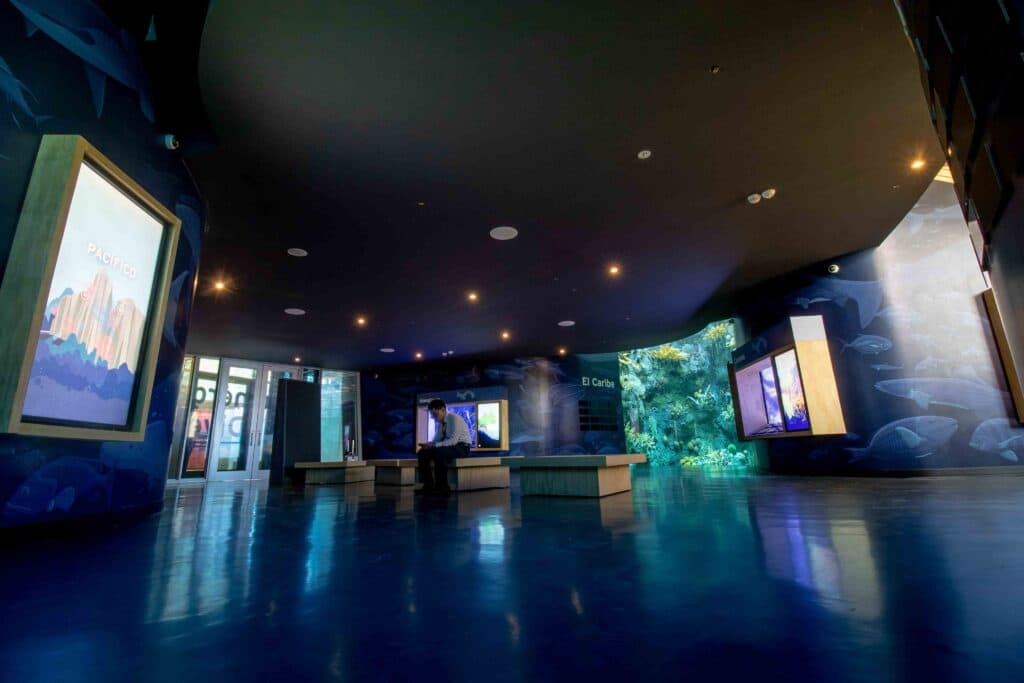
The permanent exhibition, titled Panama: Bridge of Life, tells its story in eight galleries:
• Biodiversity Gallery: An introduction to the topic of biodiversity and the work of local scientists, with a large wall of multi-colored glass, 46 feet (14 meters) long and 26 feet (8 meters) high, will show ~images of the country’s plants and animals.
• Panamarama: A projection space of three heights and ten screens will immerse the visitor in an audiovisual presentation of the natural wonders of Panama.
• The Surge Bridge: An installation that includes three rock formations 46 feet (14 meters) high, illustrating the rise of the isthmus and its effect on climate and evolution.
• The Great Exchange: Two large sculptural groups of animals represent the megafauna that was part of the great exchange of species that took place between North and South America when the Isthmus of Panama joined them after 70 million years of separation.
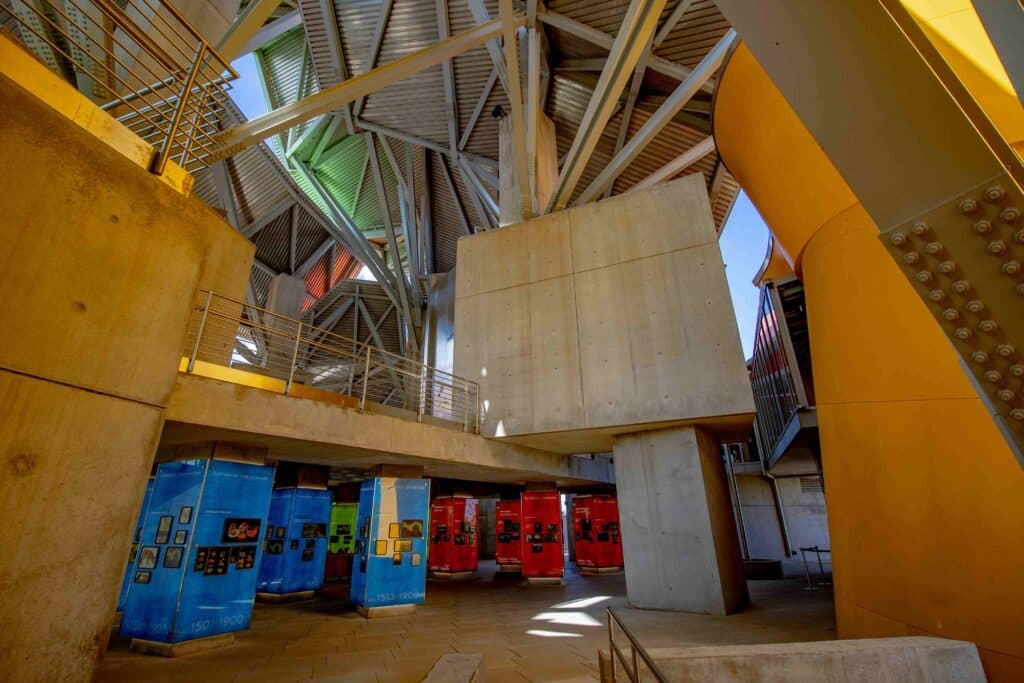
• The Human Footprint: In an open space partially outdoors, 16 columns will tell the story of humans on the isthmus and their interactions with the nature of Panama from 15,000 years ago to the present day.
• Divided Oceans: Two high-rise semi-cylindrical aquariums show how the Pacific and the Caribbean evolved drastically differently as they were separated by the creation of the isthmus.
• The Living Web: A dramatic sculpture – at the same time plant, animal, insect and microorganism – will produce in the Visitor the effect of being in a dimension where all creatures have the same importance.
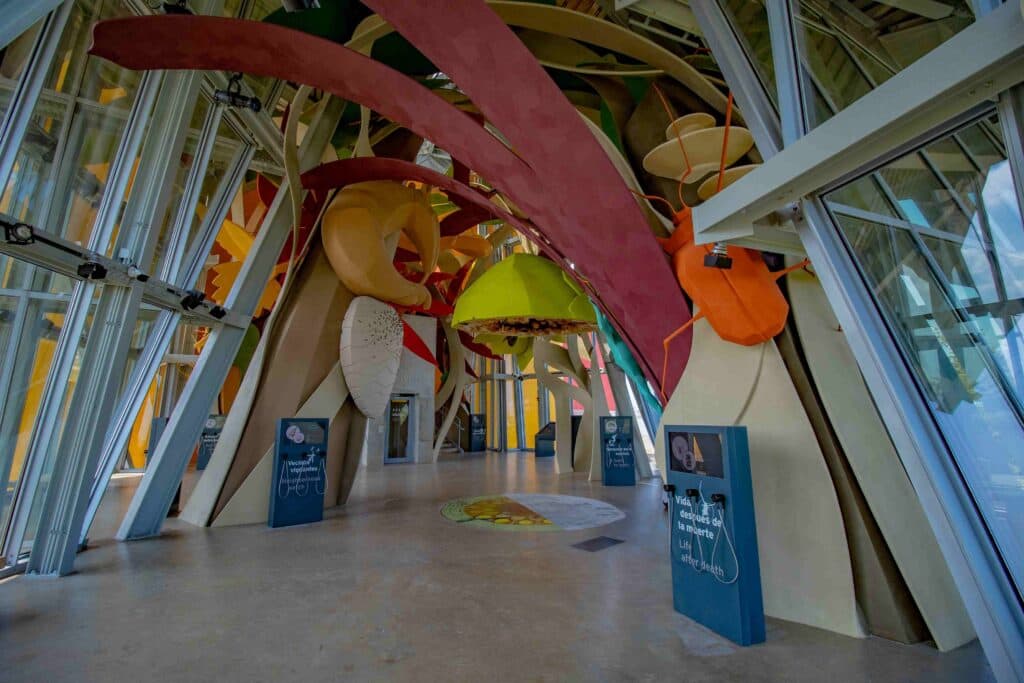
• Panama is the Museum: This gallery, which serves as an interface between the interior spaces of the Biomuseum and the Biodiversity Park, will help Visitors plan their true journey through the biodiversity of Panama.
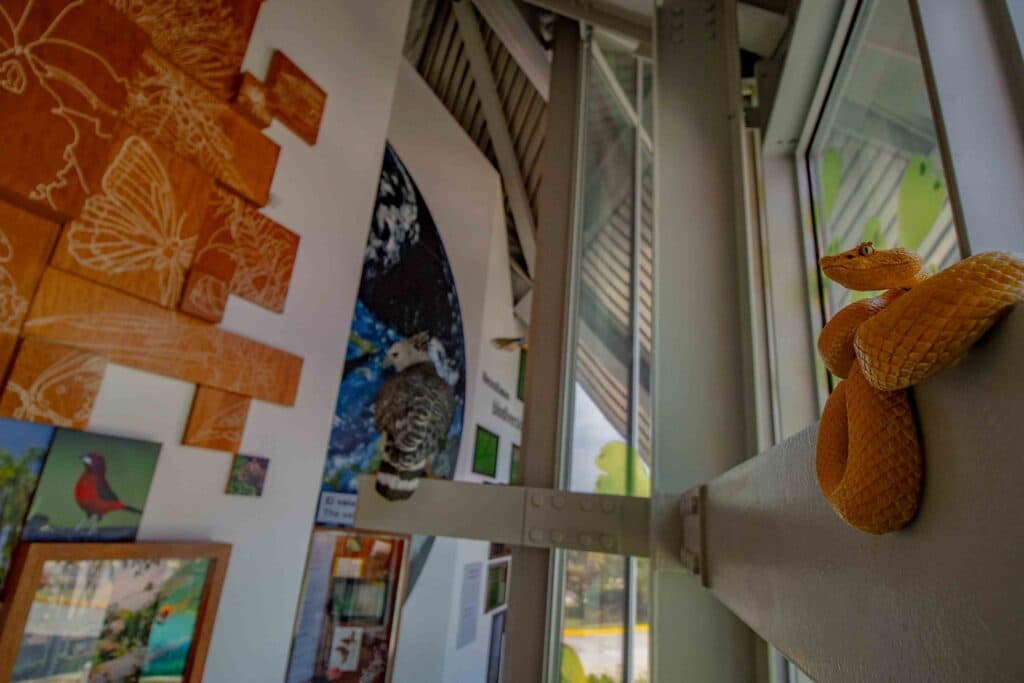
In addition to the permanent exhibition, Visitors can enjoy temporary exhibitions in the Santiago Fernandez Castro Room, as well as digital exhibitions on their social networks. You can also tour the gardens of the biodiversity park around the complex showing the diversity that Panama has in its fauna and flora. For more information and summer activities you can go to: www.biomuseo.org.
